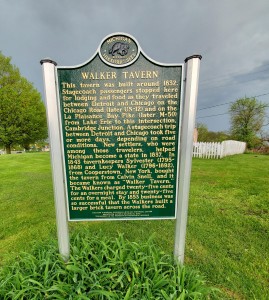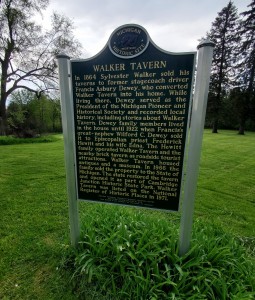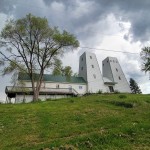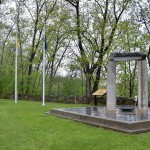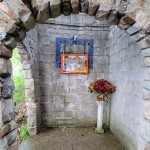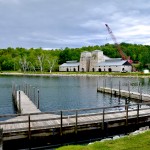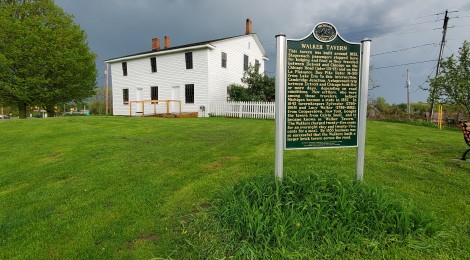
Travel Back in Time at Cambridge Junction Historic State Park (Brooklyn, MI)
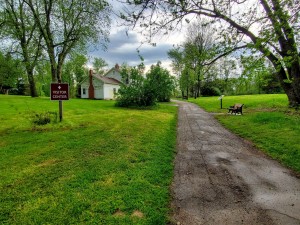
Michigan is home to more than 100 state parks, with only a select few (Sanilac Petroglyphs, Fayette, Fort Wilkins) also being classified as Historic State Parks. Cambridge Junction Historic State Park is one of the few historic sites that is also a state park, and while it is not very big it is full of local and state historical significance. The park is the site of the Walker Tavern, which was a popular stopping point for travelers making their way between Chicago and Detroit on what is now U.S. 12. Several buildings at this park have been restored to their 1840s/1850s appearance, and are open to the public. Displays tell of what life and travel were like many decades ago and how things have changed over the years. We had a chance to visit Cambridge Junction Historic State Park in May and while we didn’t get to tour the buildings we did get some great photos as a storm rolled in.
A two-sided Michigan historical marker gives more background on the Walker Tavern: “This tavern was built around 1832. Stagecoach passengers stopped here for lodging and food as they traveled between Detroit and Chicago on the Chicago Road (later US-12) and on the La Plaisance Bay Pike (later M-50) from Lake Erie to this intersection, Cambridge Junction. A stagecoach trip between Detroit and Chicago took five on more days, depending on road conditions. New settlers, who were among those travelers, helped Michigan become a state in 1837. In 1832 tavernkeepers Sylvester (1795-1868) and Lucy Walker (1796-1892), from Cooperstown, New York bought the tavern from Calvin Snell and it became known as the “Walker Tavern.” The Walkers charged twenty-five cents for a meal. By 1853 business was so successful that the Walkers built a large brick tavern across the road.”
It continues on the other side “In 1864 Sylvester Walker sold his taverns to former stagecoach driver Francis Asbury Dewey, who converted Walker Tavern into his home. While still living there, Dewey served as the President of the Michigan Pioneer and Historical Society and recorded local history, including stories about Walker Tavern. Dewey family members lived in the house until 1922 when Francis’s great-nephew Wilford C. Dewey sold it to Episcopalian priest Frederick Hewitt and his wife Edna. The Hewitt family operated Walker Tavern and the nearby brick tavern as roadside tourist attractions. Walker Tavern housed antiques and a museum. In 1966 the family sold the property to the State of Michigan. The state restored the tavern and opened it as part of the Cambridge Junction Historic State Park. Walker Tavern was listed on the National Register of Historic Places in 1971.”
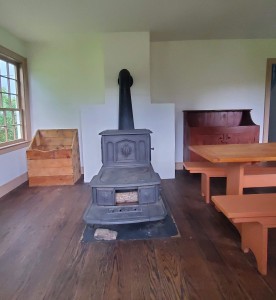
While the buildings weren’t open when we visited, we were able to peek through the windows of the tavern and get an idea of what things look like.
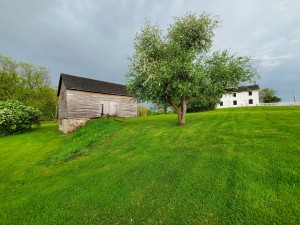
Across from the tavern there is a second historic building, a reconstructed 1840s barn that hosts more exhibits. With almost all guests arriving by horse or stagecoach, a barn would have been one of the most important buildings in the complex.
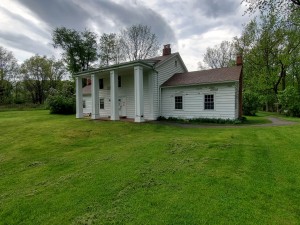
The Hewitt House Visitors Center is the third historic building at the park. It is a colonial revival style house from the late 1920s and is home to exhibits about auto tourism and other attractions in the Irish Hills region.
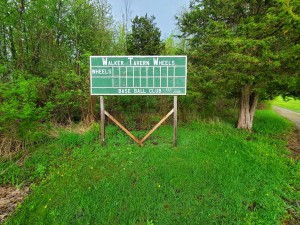
Cambridge Junction Historic State Park hosts a variety of special events throughout the year, including historic base ball games.
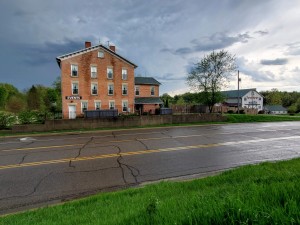
If you love Michigan history or visiting unique places, consider stopping by Cambridge Junction Historic State Park the next time you’re in Lenawee County! (Michigan recreation passport required for entry)

